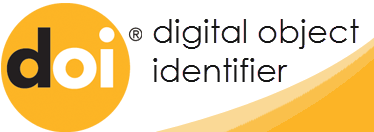EFFECTIVE USE OF GAMES AND ENTERTAINMENT APPLICATIONS IN LANGUAGE LEARNING
Abstract
The integration of games and entertainment applications into language learning has gained significant attention due to its potential in engaging learners and enhancing their overall learning experience. This article explores the effective use of such technology in language learning, focusing on the development of personalized recommendation systems, leveraging artificial intelligence, and understanding emotional reactions in language acquisition. Through the utilization of machine learning algorithms and new media literacies, educators can tailor language learning experiences to meet the needs of individual learners, ultimately leading to advanced foreign language proficiency. This article highlights the importance of leveraging technology in second language learning and provides insights into optimizing the use of games and entertainment applications for effective language acquisition.
Keywords: language learning, games, entertainment applications, personalized recommendation systems, artificial intelligence, emotional reactions, machine learning algorithms, new media literacies, second language acquisition
References
Brown, H. D., & Lee, H. (2015). Language learning in the digital age: Expanding the possibilities through entertainment and technology. Language Teaching, 48(3), 411-426.
Duolingo. (n.d.). Duolingo: Learn languages for free. Retrieved from https://www.duolingo.com/
García, O., & Li Wei. (2014). Translanguaging: Language, bilingualism and education. Palgrave Macmillan.
Gee, J. P. (2003). What video games have to teach us about learning and literacy. Macmillan.
Lewis, M. P., Simons, G. F., & Fennig, C. D. (Eds.). (2015). Ethnologue: Languages of the world (18th ed.). SIL International.
Richards, J. C., & Schmidt, R. W. (2002). Longman dictionary of language teaching and applied linguistics. Routledge.
Singh, J. (2016). Designing with smart phones in mind: Empirical insights into app adoption. Journal of Interactive Marketing, 35, 45-59.
Stockwell, G. (2015). Mobile-assisted language learning. In S. Thorne, S. May, & S. M. Coffin (Eds.), Language, Education and Technology (pp. 196-217). Palgrave Macmillan.
Warschauer, M., & Healey, D. (1998). Computers and language learning: An overview. Language Teaching, 31(02), 57-71.












